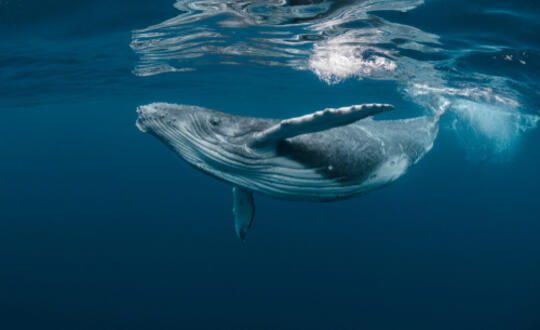Noise Pollution in Our Oceans: Can we turn down the volume for marine life?
Feb 23 2021
Unlike light, noise is a long distance traveler and can go astonishing distances through the water. In 1943, the sound fixing and ranging (SOFAR) channel, a horizontal layer of water in the ocean at which depth the speed of sound is at its minimum, was discovered. The SOFAR channel was capable of transmitting low-frequency, long-wavelength sound waves produced by an explosion near the Bahama Islands to receivers stationed near the coast of Africa. Sound waves in the narrow SOFAR channel that are traveling at minimum velocity can go as far as 15,000 miles or more. Unfortunately for those that live in the ocean, this means their world has become loud – very loud.
On February 5, 2021, Duarte et al., published “Noise Pollution: The soundscape of the Anthropocene ocean” in the journal Science. A soundscape is an acoustic environment and a wide variety of noises make up the soundscape under the world’s oceans. Weather conditions, like storms, wind or rain falling, and geological processes, such as earthquakes or undersea volcanoes, are geophony; the natural sounds that animals and organisms make, such as vocalizations, calls, trills, fins flapping, etc., are biophony. And then there are humans – the sounds we and our human activities contribute to the soundscape are called anthrophony.
One of the most widely recognized incidents representative of the impact of human sound on marine life is the March 2000 stranding of seventeen marine mammals (16 of them whales) in the Bahamas. The animals had beached themselves in and around the islands, some with bleeding ears; six of them were dead. After learning that this had occurred very shortly after US Navy destroyers were using sonar in training exercises nearby, government scientists launched an investigation. An interim report released in December 2001 concluded that the strandings were caused by several factors, but admitted the sonar pings likely dazed the mammals, causing confusion and disorientation.
Duarte indicated that shipping has increased so much over the past 50 years that it has contributed an estimated 32-fold increase in the low-frequency noises found along the world’s major shipping routes. Shipping noises interrupt sea creatures in multiple ways, including disruption of their traveling, foraging, socializing, communicating, resting, learning to avoid predators, and more. Other sounds that penetrate the ocean’s waters can include:
Studies clearly show that noise pollution compromises hearing ability, induces physiological changes, causes evasive actions and displaces marine animals. But, as Duarte pointed out, unlike other sources of pollution, noise pollution in the ocean does not persist once the source of it is removed – and the positive effect of its removal is almost immediately realized.
In the US, the National Research Council (NRC) of the National Academy of Sciences published reports in 1994, 2000, 2003 and 2005 that addressed the issue of ocean noise and marine mammals, and there has been acknowledgement of the extent of the ocean noise problem by multiple federal agencies (e.g., the National Marine Fisheries Service (NMFS), the U.S. Fish and Wildlife Service (USFWS) and the Natural Resources Defense Council (NRDC). Internationally, Section V, Article 145, of the United Nations Convention on Law of the Sea (UNCLOS), entitled Protection of the marine environment states, in part, that “necessary measures shall be taken [by the coastal State]… to ensure effective protection for the marine environment…” and that “appropriate rules, regulations and procedures” should be adopted for the “prevention, reduction and control of pollution and other hazards to the marine environment.” It does not specifically mention noise as a pollution, but it does specifically mention the “harmful effects of such activities as drilling, dredging, excavation, disposal of waste, construction and operation or maintenance of installations, pipelines and other devices related to such activities.”
For example, seismic surveys done by oil and gas companies to map out what lies under floor of the ocean are done with shockwaves fired from an air gun down towards the seabed, and it’s extremely loud, like an explosion. But there is technology called a vibroseis that could be much less harmful. Currently, there are major energy and petrochemical companies that have a marine vibroseis prototype in the works, needing only further testing prior to using it in the field. Their study is published in Exploration Geophysics. On a smaller scale, in 2015, an international shipping company remodeled a component of five of their large container ships. They discovered that when they reduced the propeller cavitation for these ships, the low-frequency sound pressure levels were decreased by 6 to 8 dB – plus, they improved their fuel efficiency. See the science in Ocean Engineering.
So while some gains have been made, other methods of restoring tranquil ocean environments need to be implemented, and the nations of the world need to come to agreement. According to Duarte, incorporation of solutions that politically and technologically mitigate human noise in the ocean in internationally binding conventions “would pave the way for ocean soundscapes that support healthier ecosystems under a sustainable ocean economy.”
Read more about Duarte’s study at: TIME2030: Underwater Noise Pollution is Disrupting Ocean Life – But We Can Fix It